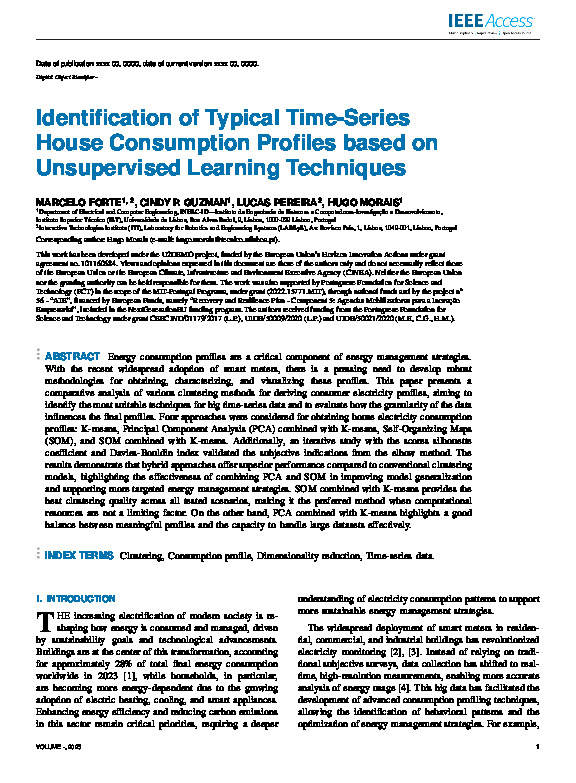Identification of Typical Time-Series House Consumption Profiles based on Unsupervised Learning Techniques
Abstract
Energy consumption profiles are a critical component of energy management strategies. With the recent widespread adoption of smart meters, there is a pressing need to develop robust methodologies for obtaining, characterizing, and visualizing these profiles. This paper presents a comparative analysis of various clustering methods for deriving consumer electricity profiles, aiming to identify the most suitable techniques for big time-series data and the impact that the granularity of the data has on the final profiles. Four approaches were considered for obtaining house electricity consumption profiles: K-means, Principal Component Analysis (PCA) combined with K-means, Self-Organizing Maps (SOM), and SOM combined with K-means. Additionally, an iterative study with the scores silhouette coefficient and Davies-Bouldin index validated the subjective indications from the elbow method. The results demonstrate hybrid approaches with superior performance compared to conventional clustering models, highlighting the effectiveness of combining PCA and SOM to improve model generalization and support more targeted energy management strategies. SOM combined with K-means provides the best clustering quality across all tested scenarios, making it the preferred method when computational resources are not a limiting factor. On the other hand, PCA combined with K-means highlights a good balance between meaningful profiles and the capacity to handle large datasets effectively.

